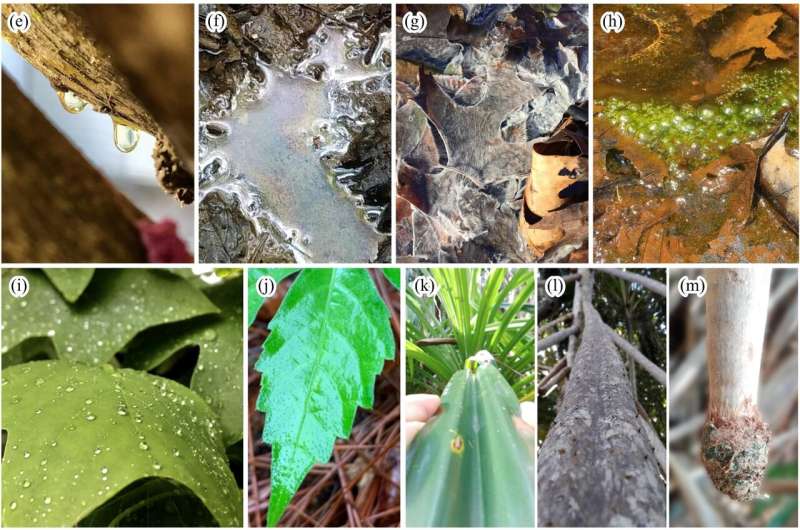This article has been reviewed according to Science X's editorial process and policies. Editors have highlighted the following attributes while ensuring the content's credibility:
fact-checked
peer-reviewed publication
trusted source
proofread
Under the weather: Scientists should spend more time in the rain, say researchers

Scientists need to get out of the lab and into the rain, say an interdisciplinary group of researchers led by John T. Van Stan of Cleveland State University. Writing in the journal BioScience, the authors make the case that human observation of storm events (be it rain, snow, or occult deposition) is key to understanding wet weather and its myriad effects on the natural world.
Recently, Van Stan and colleagues noted a trend in the scientific community towards relying on remote sensing to study storms and their consequences: "Natural scientists seem increasingly content to stay dry and rely on remote sensors and samplers, models, and virtual experiments to understand natural systems. Consequently, we can miss important stormy phenomena, imaginative inspirations, and opportunities to build intuition—all of which are critical to scientific progress."
This type of "umbrella science," they warn, can miss important localized events. For instance, in describing rainwater's flow from the forest canopy to the soils, the authors note that "if several branches efficiently capture and drain storm waters to the stem, rainwater inputs to near-stem soils can be more than 100 times greater."
The authors also point out that important phenomena like low-lying fog events, vapor trapped beneath forest canopies, and condensate plumes may escape remote detection, yet be sensible to scientists on the ground. At the broader scale, these oversights can affect Earth systems models, which often underestimate canopy water storage. They argue that these errors may represent a "large potential bias in surface temperatures simulated by Earth systems models."
Direct observation, however, has merits beyond remedying the shortcomings of "umbrella science." Van Stan and colleagues see intrinsic value in firsthand storm experiences—not only for natural scientists, but also students studying climate change impacts on ecosystems. They claim that this immersive method enhances understanding, incites curiosity, and strengthens bonds with nature, thereby enriching environmental education, inspiring research, and preparing the future scientific community.
More information: John T Van Stan et al, Shower thoughts: why scientists should spend more time in the rain, BioScience (2023). DOI: 10.1093/biosci/biad044
Journal information: BioScience
Provided by American Institute of Biological Sciences



















